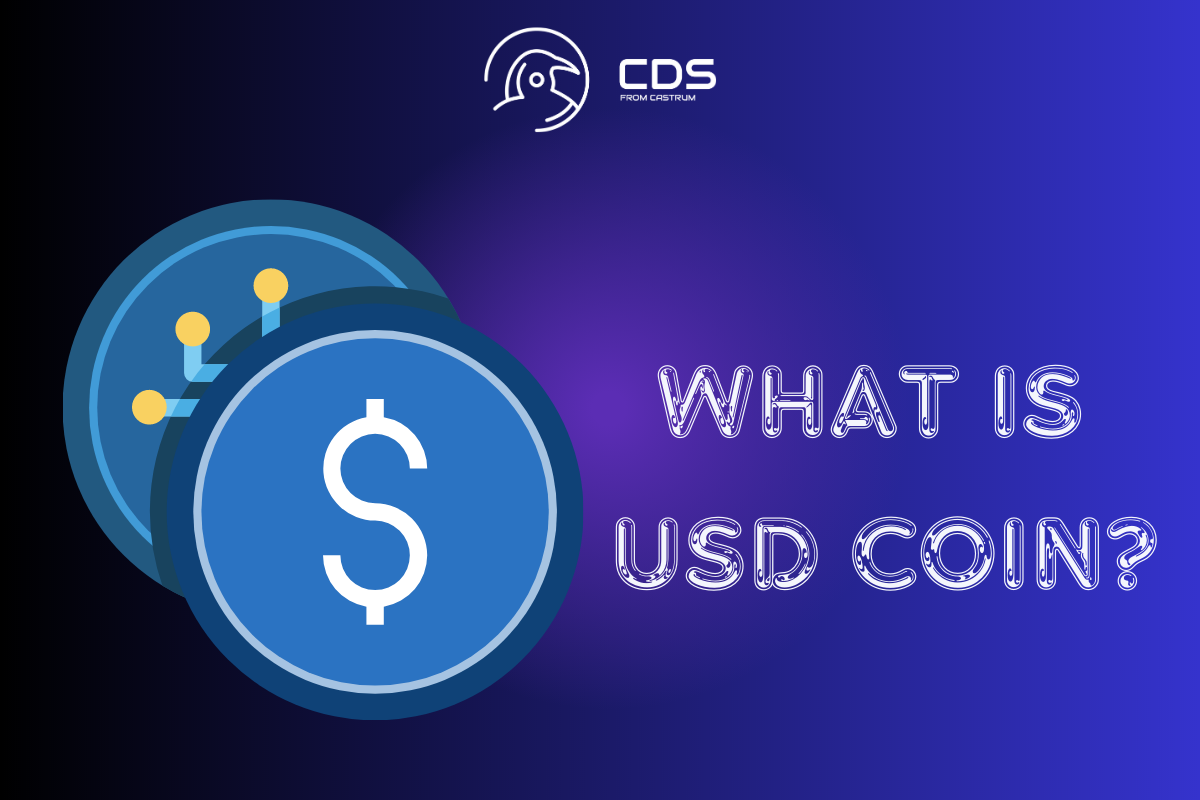What is USD Coin? Where to Store USD Coin?
USD Coin (USDC) is a relatively new stablecoin that was launched on September 26, 2018, through a collaboration between Circle and Coinbase. It serves as an alternative to other USD-backed cryptocurrencies such as Tether (USDT) or TrueUSD (TUSD).
In simple terms, USD Coin is a service that tokenizes US dollars and enables their use over the internet and public blockchains. USDC tokens can be easily converted back to USD at any time, and the issuance and redemption of these tokens are facilitated through an ERC-20 smart contract.
By bringing US dollars onto the blockchain, USD Coin allows for quick global transfers and adds much-needed stability to the cryptocurrency space. It also opens up new opportunities for trading, lending, risk-hedging, and more.
The development of USD Coin is led by the Centre consortium, which is a partnership between Circle and Coinbase. Centre focuses on the technological and governance framework, while Circle and Coinbase act as the first commercial issuers of USDC.

Circle, founded in 2013 by Jeremy Allaire and Sean Neville, is an official Money Transmitter, which means it complies with US federal laws and regulations. Before the issuance of USDC, Circle holds an equivalent amount of USD with one of its accredited partners, ensuring that all USDC tokens are regulated, transparent, and verifiable. Circle is also known for its backing by Goldman Sachs.
USD Coins are not created out of thin air. Circle guarantees that each USDC token is backed by a single US dollar through a process called tokenization. Tokenizing USD into USDC involves three steps: a user sends USD to the token issuer’s bank account, the issuer uses the USDC smart contract to create an equivalent amount of USDC, and the newly minted USDC tokens are delivered to the user while the substituted US dollars are held in reserve.
Redeeming USDC for USD is a straightforward process that reverses the tokenization steps. A user sends a request to the USDC issuer to redeem an equivalent amount of USD for USDC tokens, the issuer sends a request to the USDC smart contract to exchange the tokens for USD and removes an equivalent amount of tokens from circulation, and finally, the issuer sends the requested amount of USD from its reserves back to the user’s bank account, deducting any fees incurred.
Compared to the popular stablecoin Tether (USDT), the creators of USD Coin are obligated to provide full transparency and work with various financial institutions to maintain full reserves of the equivalent fiat currency. All USDC issuers are required to regularly report their USD holdings, which are then published by Grant Thornton LLP.
USD Coin is an ERC-20 token, meaning it operates on the Ethereum blockchain and can be used with any application that supports the ERC-20 standard.

To tokenize or redeem USDC with Circle, users need to register an account, complete the identity verification process (KYC), and link a legitimate bank account. Circle’s platform allows users to perform four core actions: tokenize USD, redeem USDC, transfer USDC to ERC20 compatible Ethereum addresses, and deposit USDC from external Ethereum wallet addresses. Circle does not charge fees for tokenizing and redeeming services, except for a $50 commission for incorrect or rejected bank transfers. Coinbase, on the other hand, applies standard fees for USDC operations.
The minimum redemption amount for USDC is 100 tokens, and the process can take up to 24 hours on business days. There is no minimum tokenization amount, and the process can take up to 2 business days.
In general, stablecoins like USD Coin are used for various purposes, including shorting cryptocurrencies without converting them to fiat, facilitating transactions without relying on traditional financial instruments or institutions, protecting against hyperinflation in countries with unstable economies, and more.
USD Coin falls into the category of fiat-collateralized stablecoins, which are centralized by design. Other stablecoins in the same category include Tether (USDT), TrueUSD (TUSD), Gemini Dollar (GUSD), Paxos Standard Token (PAX), Digix Gold (DGX), and others.
USD Coin can be purchased on various cryptocurrency exchanges, such as Binance, Poloniex, Coinbase Pro, CoinEx, Coinsuper, OKEx, and more. It can also be converted to USD and vice versa on Coinbase.

As an ERC-20 token, USD Coin can be stored in any Ethereum wallet, including MyEtherWallet, MetaMask, Mint, or Jaxx wallets.
USD Coin is a rapidly growing project with credible institutions supporting it. Since its announcement in May 2018, the project has expanded its ecosystem to include over 60 partners.
Some recent news about USD Coin highlights the level of control that the project creators retain over the stable cryptocurrency. They have the ability to blacklist addresses and freeze funds if there are suspicions of illegal activities. However, it’s important to note that many other stablecoins have similar clauses, except for DAI by Maker, which doesn’t possess such terms.

There are other similar projects to USD Coin, including Tether (USDT), TrueUSD (TUSD), Gemini Dollar (GUSD), Paxos Standard Token (PAX), Dai (DAI), bitCNY (BITCNY), bitUSD (BITUSD), bitEUR (BITEUR), Stasis Eurs (EURS), nUSD (NUSD), and White Standard (WSD). These stablecoins operate under different mechanisms and have varying levels of transparency and backing assets.
















Leave a comment